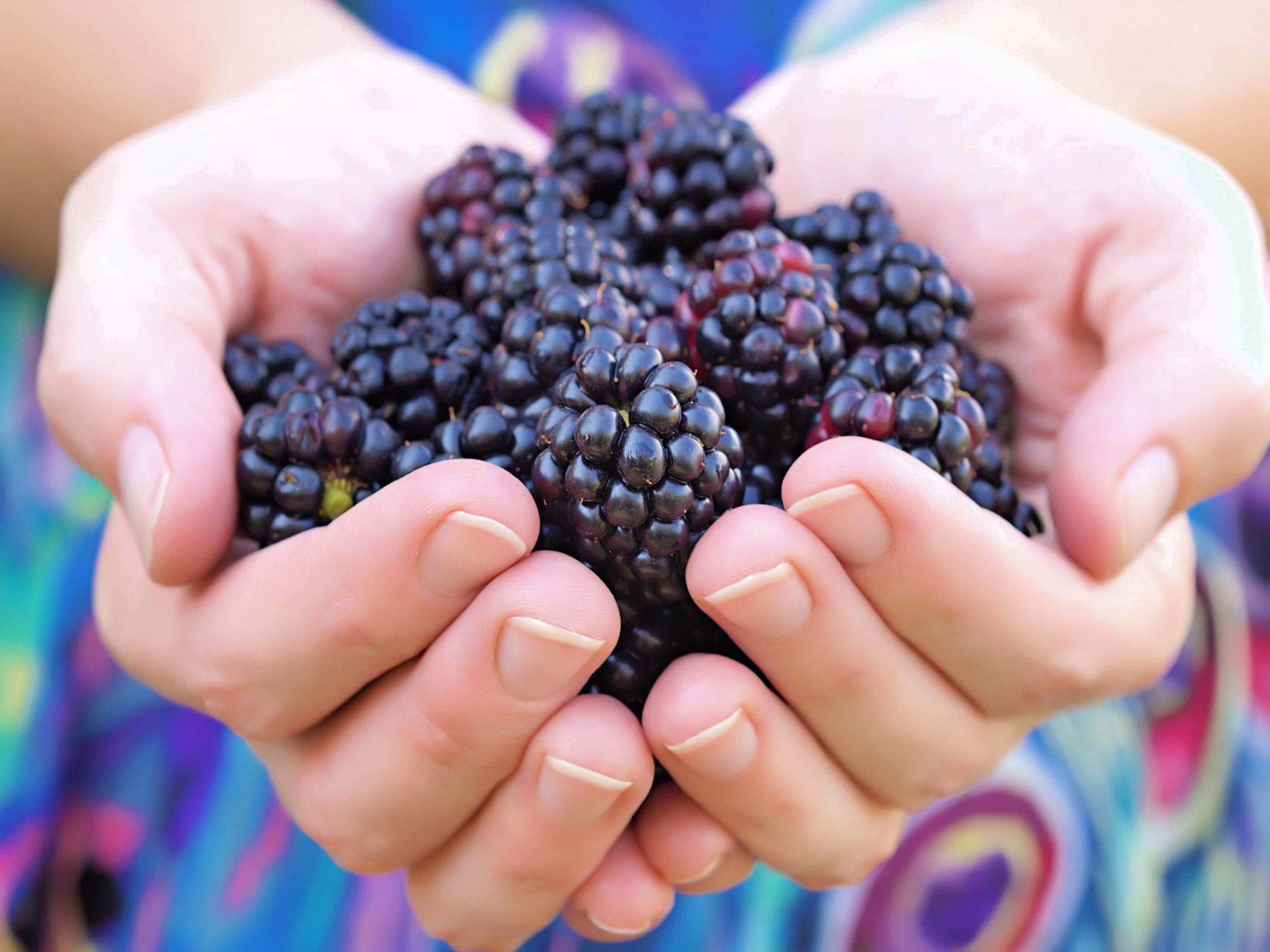Whitebark raspberries, scientifically known as Rubus leucodermis, are a type of fruit that can be found in western North America. These berries are small, measuring about 1/2 inch across, and are covered in a whitish bloom, giving them a unique appearance. The berries are distinctly hairy and initially red in color, but as they ripen, they darken to a purple or black hue.
One of the most notable characteristics of whitebark raspberries is their delicious taste. When fully ripe, these berries are incredibly flavorful and are often described as being very tasty. They can be enjoyed raw, straight off the bush, or can be used in various culinary applications such as pies, jams, and other desserts. Some people even dry them for winter use, as they retain their flavor even after being dried.
While whitebark raspberries possess excellent flavor, they are not commonly grown commercially due to their soft texture. This makes them less suitable for large-scale production and distribution. However, for those fortunate enough to have access to these berries, they are a true delight.
In addition to their culinary uses, whitebark raspberries also have some nutritional benefits. Like other berries, they are a good source of antioxidants, which can help protect the body against oxidative stress and prevent damage to cells. They also contain essential vitamins and minerals, including vitamin C, vitamin K, manganese, and dietary fiber.
In terms of cultivation, whitebark raspberries are native to western North America and can often be found growing in the wild. They prefer moist and well-drained soil, and thrive in areas with a cool climate. If you’re interested in growing these berries in your own garden, it’s important to provide them with the right conditions and care.
Whitebark raspberries are a delectable fruit that can be enjoyed when fully ripe. Their unique appearance, with the whitish bloom covering their purple or black skin, makes them stand out. While not widely grown commercially, these berries are cherished by those who have the opportunity to taste their exceptional flavor. Whether eaten fresh or used in various culinary creations, whitebark raspberries are a true delight for the taste buds.
Are Whitebark Raspberries Edible?
Purple or black raspberries covered in a whitish bloom, each measuring approximately 1/2 inch across, are indeed edible. These raspberries are known as whitebark raspberries. They start off as red in color but darken as they ripen in late summer. When fully ripe, they are delicious and have a very enjoyable taste.
Here are some key points about whitebark raspberries:
– They are covered in a whitish bloom, giving them a distinctive appearance.
– The berries are hairy in texture.
– Initially, they are red in color but darken with age.
– Whitebark raspberries are edible and known for their excellent taste.
– They are typically ripe and ready to eat in late summer.
– These raspberries are approximately 1/2 inch in size.
– When fully ripe, they are considered to be very tasty and enjoyable to eat.
Whitebark raspberries are a type of purple or black raspberry with a whitish bloom. They are hairy and initially red in color but darken as they ripen. They are edible and known for their delicious taste when fully ripe in late summer.

Can You Eat Rubus Leucodermis?
Rubus leucodermis, commonly known as the Blackcap Raspberry, is edible. The fruit can be consumed both raw and cooked, making it suitable for use in various recipes such as pies, jams, and other culinary creations. It is highly regarded for its excellent flavor. Additionally, the fruit can be dried for winter use, offering a convenient way to enjoy the fruit during the off-season. However, it is worth noting that due to its soft texture, Rubus leucodermis is not typically grown commercially. Nevertheless, it is a delightful fruit that can be enjoyed fresh or preserved.
Are Black Raspberries Native To North America?
Black raspberries are native to North America. Specifically, they are found in the western regions of the continent. There are three species of black raspberries that fall under the genus Rubus: Rubus leucodermis. These species are naturally occurring in the western parts of North America.
It is important to note that this information is based on scientific classification and botanical studies.
Conclusion
Whitebark raspberries, scientifically known as Rubus leucodermis, are a type of black raspberry native to western North America. These unique fruits are easily recognizable by their purple or black color and the whitish bloom that covers their surface. With a diameter of about 1/2 inch, whitebark raspberries are slightly larger than other raspberry varieties.
One distinctive feature of whitebark raspberries is their hairy texture, which sets them apart from other raspberries. Initially red in color, these raspberries darken as they ripen, becoming even more flavorful in late summer. When fully ripe, whitebark raspberries are incredibly tasty and can be enjoyed raw or cooked in various culinary preparations such as pies, jams, and other desserts.
Although the soft texture of whitebark raspberries makes them unsuitable for commercial cultivation, they are highly sought after by those who appreciate their exceptional flavor. Additionally, these fruits can be dried for winter use, allowing for enjoyment throughout the year.
Whitebark raspberries are a delightful addition to any garden or foraging experience, offering a unique and delicious fruit that is sure to please the taste buds. Their natural beauty, coupled with their delectable taste, makes them a favorite among raspberry enthusiasts. So, whether enjoyed fresh or preserved, whitebark raspberries are a true culinary delight that should not be missed.
